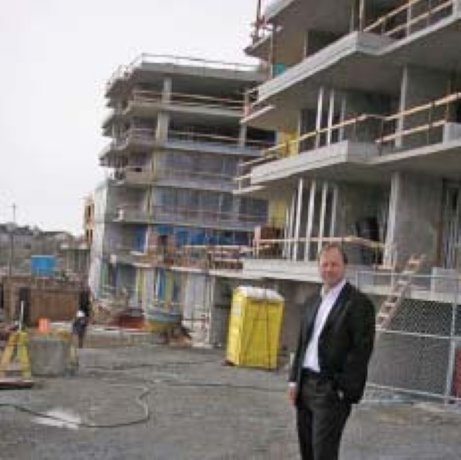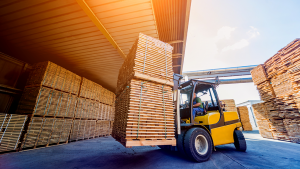Focusing on the triple bottom line – social, environmental, and financial considerations – does work, said Joe Van Belleghem, a partner in the Windmill Development Group, a Victoria-based company that does only green, leading edge developments. Its projects include the Dockside Green in Victoria, the Bridges in Calgary, the Currents in Ottawa and the Windmill Green.
Green
Focusing on the triple bottom line – social, environmental, and financial considerations – does work, said Joe Van Belleghem, a partner in the Windmill Development Group, a Victoria-based company that does only green, leading edge developments. Its projects include the Dockside Green in Victoria, the Bridges in Calgary, the Currents in Ottawa and the Windmill Green.
In January, it signed a letter of intent in Ottawa with the Sierra Club of Canada and the Canadian Environmental Network for the creation of Canada’s first Earth Embassy Building. The showcase green building will house offices for leaders in Canada’s environmental movement.
Windmill’s Dockside Green project has been an example of how sustainable features have turned it into almost a self-contained community, Belleghem told delegates attending a conference on sustainability recently. The development is a joint-venture with VanCity Credit Union and utilizes a 15-acre contaminated site in the city’s inner harbour.
Several attempts had been made to reclaim and develop the site until Windmill and VanCity came along with a successful mixed use sustainable community with residential units, shops, office space and green space.
It would embrace community values such as local community facilities, have First Nations involvement, and offer some affordable housing units. The units in Phase I sold out for “record prices” in three hours, said Belleghem, while Phase II started construction in December 2006.
The whole housing concept, from an organic bakery to green roofs is geared to provide a holistic approach to sustainable living. Even features such as the carpet in the hallways is done in tiles so that individual ones can be replaced rather than rolls of carpeting which ultimately ending up in landfill.
It also offers a lower replacement cost. Recovered wood from a flood dam area has been used for lumber needed in the construction. Environmentally friendly concrete has been used in the project. The development also treats its own sewage, said Belleghem, a feature that allows it to bypass the use of the city’s infrastructure. As a result, it has been able to save $800,000 in development charges.
Heat from the sewage treatment is being recycled back into the buildings, which are also heated by a low-emission biomass plant on site, burning waste from a local sawmill and tree contractors. Energy efficient lighting is used throughout the building.
Water is being captured to use on site, used, recycled and treated on site and yields surplus water that could be sold for irrigation or such uses to another beneficiary. There is a composting facility on site as well.
Windmill has also worked with the First Nations on whose former lands the development sits. “At first I thought – why talk to them?” Belleghem said, before realizing the historical significance the land had to the community and a “healing ceremony” was later arranged to commemorate the development and the bridge between the two communities.
The company encouraged use of First Nations labour on work sites but found that wasn’t completely successful as skills were often lacking. As a result, the company has set up a mentoring program for First Nations workers so they can improve their Grade 10-12 level of learning which will help them acquire downstream skills that can lead to enhanced construction jobs.
“Labour was one of my biggest concerns when we were building the project,” says Belleghem, but he says that contractors and tradesmen have bought into the concept and are interested in many of the project’s unique features. Also, there has been no need for contingency financing.
Belleghem said construction today has to be more reflective of community needs and concerns. Change can only come from recognizing a need. He gave the example of a homeless individual who kept asking him when he was going to do something for the homeless.
Belleghem said he found himself almost frightened by the individual’s continued demands. But, he was really “scared of getting involved,” he said. “And, we have got to get involved.”
He said his whole family became involved with a local program helping the homeless and understanding their problems and needs. “Too often we just go to work” and walk by many of the problems that need addressing such as climate change, he said.











Recent Comments
comments for this post are closed